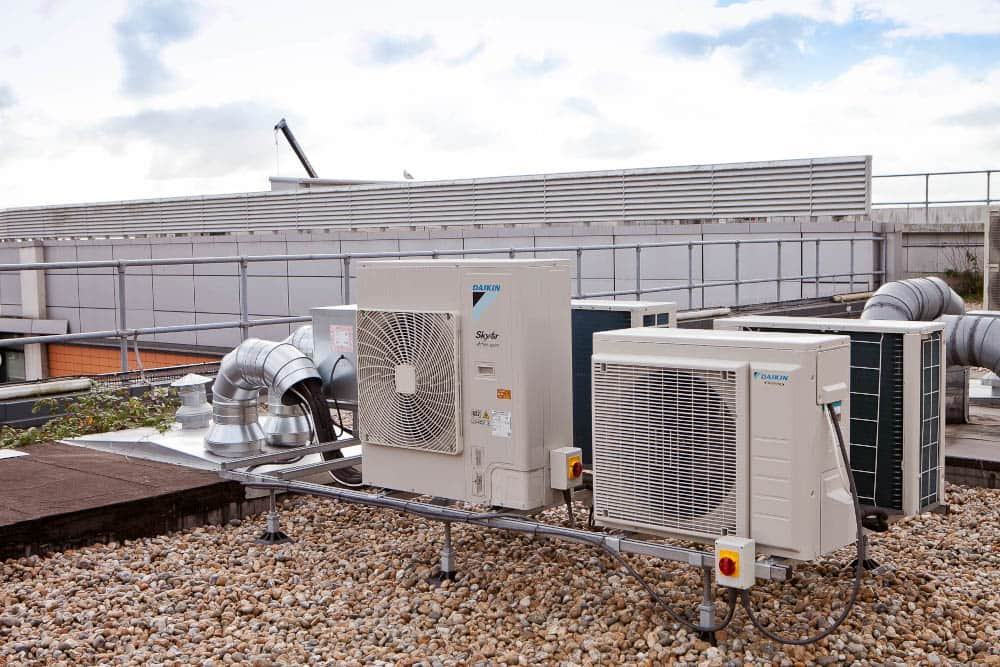Heat pumps are becoming a popular solution for low-carbon home heating across the UK. With rising energy bills and a strong push towards sustainability, many homeowners are exploring options like air source heat pumps and ground source heat pumps. But one of the most frequently asked questions we receive is: “Do you need permission to install a heat pump?”
At JP Air Conditioning, we want to make this journey easier for you. In this blog, we’ll explain everything you need to know about planning permission for heat pumps, including when it’s required, what factors affect it, and how to apply if needed. We’ll also clear up common myths to help you make a confident decision.
Do you have questions or need expert help with your installation? Call us on 0800 999 1277 or email us at info@jpaircon.com today!
Thinking of going green with a heat pump? Don’t get stuck on paperwork—our expert team at JP Air Conditioning ensures hassle-free installations that comply with all local planning regulations.
Air Source Heat Pumps: When Is Planning Permission Required?
For most UK properties, installing an air source heat pump is considered a Permitted Development. This means planning permission isn’t usually needed. However, certain conditions must be met:
- The unit must be installed on the ground or a flat roof.
- It should be more than one metre from the boundary of the property.
- Only one heat pump can be installed.
- It should not be visible from a public highway if mounted on a wall.
- Noise levels must comply with Microgeneration Certification Scheme (MCS) standards.
If these requirements aren’t met, planning permission will likely be required. You can find detailed information in our post on planning permission for air conditioning in the UK, which follows similar regulations.
Ground Source Heat Pumps And Planning Permission: What You Need To Know
Ground source heat pumps involve installing pipework underground, either in trenches or boreholes. The good news? Like air source models, these systems generally fall under permitted development rights.
However, permission may be required if:
- The property is within a listed building or conservation area.
- The boreholes go deeper than standard residential drilling allowances.
- The project impacts trees or protected land.
In such cases, you’ll need to contact your local planning authority for clarification.
Understanding Planning Permission Requirements For Heat Pump Installations
The rules for whether you need permission to install a heat pump vary based on location, property type, and system size. Generally, installations in standard single-dwelling houses enjoy more lenient regulations compared to flats, commercial buildings, or properties in sensitive areas.
To ensure compliance:
- Always follow Microgeneration Certification Scheme (MCS) guidelines.
- Installations should not exceed 0.6m³ in volume.
- Check noise emission levels—especially important in residential areas.
By ensuring your system is MCS-certified and installed by a professional like us at JP Air Conditioning, you’re on solid ground for both efficiency and legal compliance.
Key Factors That Influence Planning Permission For Heat Pump Installations
Several key elements will determine if you need planning permission:
- Location Of The Unit: The unit must be positioned to minimise its visual and auditory impact.
- Noise Regulations: The pump must meet specific decibel levels, particularly for night-time operation. This is especially relevant if neighbours are close by.
- Property Type: Flats, maisonettes, or properties within conservation areas often require more scrutiny.
- Proximity To Boundaries: Installing a unit too close to a neighbouring property increases the chances that permission will be needed.
- Aesthetic Impact: If your installation changes the look of the building significantly, planning approval could be necessary.
Do You Need Permission For Installing A Heat Pump In Listed Buildings Or Conservation Areas?
Yes, if your property is a listed building or located within a conservation area, you will almost always require planning permission. Here’s why?
- Listed properties are protected for their historical or architectural value.
- Any changes that affect the exterior appearance—even if it’s energy-efficient—need approval.
You’ll also need Listed Building Consent in addition to planning permission. Our team at JP Air Conditioning is experienced in such installations and can guide you through both processes seamlessly.
What To Do If You Don’t Need Planning Permission For Your Heat Pump Installation
If your installation falls under permitted development:
- Keep Records: Maintain installation documents and MCS certificates.
- Inform Your Neighbours: Especially if the unit is close to shared boundaries.
- Use Qualified Installers: This helps avoid compliance issues later.
Choosing JP Air Conditioning means you’re working with professionals who understand both the technical and legal requirements of heat pump installations.
How To Apply For Planning Permission For A Heat Pump Installation
If your project does require planning permission, here’s what to do:
- Contact Your Local Planning Authority (LPA): Explain your project, and ask about any local considerations.
- Prepare Documentation: You’ll need detailed plans, specifications, noise reports, and site photos.
- Submit The Application: Most applications are done online through the Planning Portal.
- Await Approval: This usually takes around eight weeks, though it can vary by council.
Our experienced team can help you prepare everything, including design and documentation, to ensure your application goes smoothly.
Common Misconceptions About Heat Pump Planning Permission
Let’s debunk a few myths:
- “All heat pumps need permission.”
Not true. Most residential units are permitted without extra paperwork.
- “You can install a heat pump anywhere.”
Incorrect. Location and proximity to boundaries matter.
- “Planning permission is a long and expensive process.”
While it can take time, it’s often straightforward when done correctly.
- “Listed buildings can’t have heat pumps.”
Incorrect. You can install one, but it requires extra steps and sensitivity to the building’s heritage.
Conclusion: Ready To Install Your Heat Pump?
Understanding whether you need permission to install a heat pump is vital before starting your project. With the proper knowledge and expert support, the process is more straightforward than you might think.
At JP Air Conditioning, we’re here to help every step of the way—from system selection and design to planning applications and installation. We make sure your transition to sustainable heating is smooth, legal, and energy-efficient. Ready to make the switch? Call us on 0800 999 1277 or email us at info@jpaircon.com to book your consultation today!
Let’s help you heat your home innovatively.
Frequently asked questions
Do you need planning permission for a heat pump in the UK?
In most residential settings, no. Thanks to the permitted development rights. However, specific criteria must be met regarding noise, location, and property type.
Can you install your own heat pump in the UK?
While technically possible, it’s strongly recommended to use a certified installer. Incorrect installation can void warranties and result in non-compliance.
What are the rules for heat pumps in the UK?
Follow MCS standards, maintain minimum distance from boundaries, keep noise within acceptable limits, and adhere to visual impact rules.
Are you allowed to install your own heat pump?
Yes, but it’s not advisable unless you’re qualified. A professional ensures efficiency, compliance, and long-term performance.
Can you buy a heat pump and install it yourself?
You can, but without proper accreditation, you may struggle to qualify for government incentives or meet compliance regulations.
Where should a heat pump not be installed?
Avoid placing it:
- Too close to neighbouring homes
- In visually sensitive areas
- Near bedrooms, if noise could be an issue



